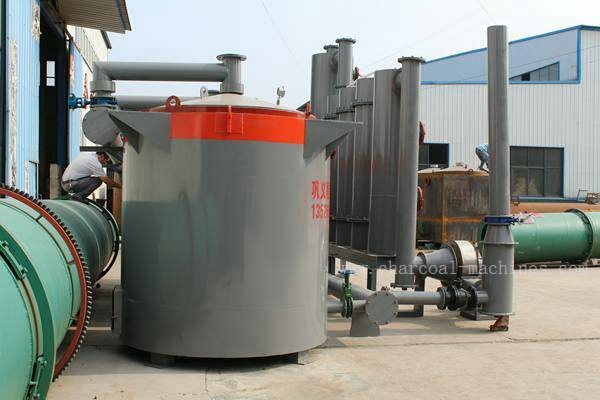연속 탄화 기계는 국내 숯 생산 산업에서 오랫동안 사용되어 왔습니다. 숯의 기계적 탄소 없는 형태가 널리 알려진 이유는 무엇일까요? 시장에 출시된 상품 기계가 널리 인식되지 않는다면, 자연스럽게 대중에게 알려지지 않을 것입니다. 시장에 나와 있는 이른바 연속 탄화 기계도 마찬가지입니다.
시장에서 흔히 사용되는 소위 연속 탄화기는 단순히 회전 드럼식 건조 장비의 일종입니다. 소규모 작업장 기계 기업이 온도 업그레이드 버전의 기계 장비를 신중하게 조각한 후에는 탄화 장비라고 불릴 수 없으며 기술 성숙도라고도 할 수 없습니다. 기계 장비, 오늘날에는 이 문제 결함의 온도에 대해 소개합니다.
기계 장비에 사용되는 대부분의 재료가 강철로 만들어진다는 것은 잘 알려져 있으며, 드럼형 회전 구동 기계도 예외는 아닙니다. 시장에서 소위 연속 탄화 기계의 공통 작업 원리는 무엇일까요? 재료는 일정 두께의 강철 재질 실린더에서 뒤집혀지고, 강판의 외벽은 열원 불꽃에 의해 가열되며, 강판은 열전도성이 있어 재료를 간접적으로 가열하는 목적을 달성합니다. 문제는 우리가 필요한 것이 혐기 상태에서의 탄화라는 것입니다. 강철 드럼에서는 산소가 없는 상태를 달성할 수 있지만, 온도가 상승할 수 있는 상태는 어떤 것일까요?

Q235-B의 온도는 최대 350°C입니다! 시장에서 흔히 사용되는 대부분의 강판은 Q235-C이며 사용 온도는 더 낮습니다.
이것에 대해 말하면 모두가 통찰력을 가지고 있어야 합니다. 시장에서 흔히 사용되는 소위 연속 탄화기는 다음과 같습니다.
목재 원료를 탄화하기 위한 온도 요구 사항은 435°C입니다(이는 연기 없이 숯을 굽는 최저 등급입니다). 이러한 소규모 작업장 스타일 기업은 어떻게 이 일을 할까요? 강판으로 만들어진 드럼형 연속 탄화기는 동력 구동의 회전 운동 하에서 장시간 350°C 이상의 온도에 노출되며, 외관이 변형되지 않고 기계가 폐기되지 않습니다.
